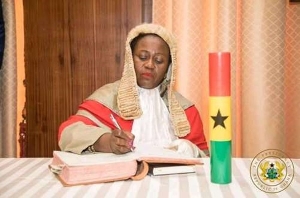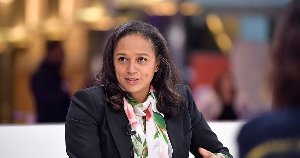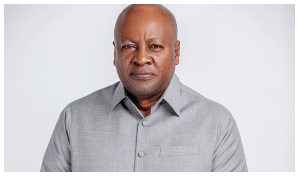At the beginning of the class, students are given their worksheets for the lesson. It outlines the various stages of the lesson with its corresponding questions with blanks for students to supply answers. The teacher provides key facts for each segment on the worksheet. Students are directed to use textbooks, reference books, atlas, or any useful available material to research further on the presented information. These textbooks are not written to spoon-feed readers rather when students work with textbooks, they must read passages on a heading to identify facts from it so at the end they do not end up writing almost the same answers with the almost same wording. When using the worksheet, the teacher asks the question at each stage, then from the information received and researched, students, provide their answers.
If the class has been put in groups which happens mostly, the student first works individually within the group for the time provided by the teacher. The student fills the blanks on the worksheet for that stage. When the time for individual work elapses, the student moves to discuss his or her answer with the rest of the group members for the group`s conclusion. This is also done within a timeframe. Afterward, the group when called by the teacher discusses it collective answers with the entire class. For a class, students get the opportunity to work individually, at a group level, and the whole class level. When segment of a topic goes through these layers of discussion and activities it aids retention and understanding. Group work is used as an essential class activity but not as necessary only when there is shortage of materials. This is an example of how worksheet and group activities are employed in a Japanese junior high school Social Studies class.
The structure of the worksheet is very important in keeping the learner very active and focused at each stage of the lesson; in that, at each stage, the learner is involved in the lesson. The students do not have to wait to answer all the questions for evaluation of the day at the end of the lesson in a Social Studies class. The student is either using textbooks and other materials, listening to the teacher or classmates, and having group discussions.
In the instance of the normal ` take your exercise books` after lesson delivery, some students become literally passive throughout the lesson, and might not contain all the information learned. Some will also take a portion of it which they cannot answer all questions. But when they are given the opportunity to tackle and effectively discuss bits of the topic for a lesson, using materials and different activities, they are able to retain information and answer questions.
There is a unique feature in the assessment in the Japanese junior high school Social Studies class. The last part of the worksheet for assessment, students are made to provide their reflections on the lesson. As compared to the Ghanaian structure, there is no opportunity for the student to provide his or her reflection for assessment. In reflecting, the student talks about what was of interest to him or her in the lesson, what has been learned new, the difficulty encountered during the lesson, where there will be further personal research on the topic by the student, even, the students can talk about his or her mood during the lesson giving the teacher an idea of the physical and emotional state the student was in.
The student shares his or her reactions to the lesson, the student can even talk about the classroom atmosphere. It is good for the student and also for the teacher; helping the teacher to really understand the students he or she is teaching and also to improve on practice. Students` reflection is very necessary as it provides the affective picture of the learner aside the cognitive learning. So, feedback from students to teachers is not limited to only class exercises and examinations.
Here comes the big question the Ghanaian teacher will ask, who will provide the worksheets for every lesson. It is not about using exact worksheets. Though, if the idea is well sold, the government can be innovative to supply each school in the country with printers but till that becomes a reality, the teacher can rely on his or her improvisation and creative skills. The design of the worksheet presented can be adopted for lessons.
Teachers need not wait till the end of a lesson to unload all questions for evaluation on students to answer. At each stage of the lesson, segment of the topic should be subjected to rigorous discussions and activities for better understanding and followed by assessment. In simple terms, if the teacher has three (3) questions for evaluation for the day, at the end of each stage of the lesson, a question can be worked on by the students so the exercise book will be kept `opened` throughout the lesson. This will put an end to the normal command, `take your exercise books` at the end of the lesson. Formative assessment should be properly done throughout the lesson.
Click to view details



Opinions of Wednesday, 17 February 2021
Columnist: Okota-Wilson Nicholas



















